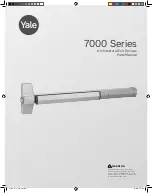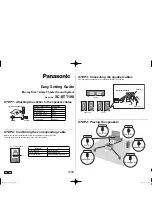
19
-
The fact that the characteristic is relatively flat in the vicinity of the operating point
prevents unnecessarily high output powers
-
This not only has a positive effect on the power consumption, but also helps to avoid
overdimensioned components
-
Although it dispenses with all the weight and space-intensive auxiliary components
that used to be added in order to improve the welding properties, it nevertheless still
achieves superlative results
In spite of the complicated controlling
system needed for use in welding, the
resonance-converter principle offers a
number of useful advantages:
-
The resonance structure makes it
possible to achieve a nearly “ideal
output characteristic”
-
Reduced switching losses permit
higher switching frequencies yet with
optimum efficiency
U
out
80V
Ideal
characteristic
Standard characteristic WIG
Fig.4
Characteristic on resonance converter, WIG
Characterisitic
(for pulse-width
modulation)
150 A
I
out
A series resonance converter consists of
the following components:
-
series resonance circuit (coil and
capacitor)
-
load resistor
-
transistors for addressing the resonant
circuit
Transistors T1 and T2 are addressed
alternately
U
DC
L
S
C
S
R
L
T1
Fig.5
Series resonance converter
T2
If transistor T1 becomes conductive, the series resonance circuit (i.e. coil and capacitor)
generates a positive, sinusoidal half-wave that is discharged via the resistor R
L
.
The negative half-wave resulting from the oscillatory behaviour of the series resonance
circuit flows via: R
L
, the capacitor C, the coil L
S
and the transistor T2 (as soon as
transistor T2 becomes conductive).
If the addressing frequency is identical with the resonance frequency of the series
resonance circuit, the output voltage at the load resistor R
L
will correspond to the input
voltage U
DC
. At higher or lower frequencies (relative to the resonance frequence) the
output voltage will decrease. This is the means by which the resonance converter can
be controlled.
Series resonance
converter
Series-parallel
resonance
converter
The outcome of further development work
on the series resonance converter is the
“series-parallel resonance converter”:
The series-parallel resonance converter
has an additional capacitor C
P
, which is
connected in parallel to the resistor R
L
.
Together with R
L
, the capacitors C
S
and
C
P
constitute a loaded capacitive voltage
divider. For this reason, the resonance
circuit (coil and capacitor) has a capacitor
component that is divided up into C
S
and
C
P
.
U
DC
L
S
C
S
R
L
T1
C
P
Fig.6
Series-parallel resonance converter
T2
Pmax! With PWM,
max. power is needed
Resonance
converter
(continued)
Содержание TP 1500
Страница 1: ...1 Service Manual...
Страница 53: ...53 Overall circuit diagram...
Страница 54: ...54...
Страница 114: ...114...
















































